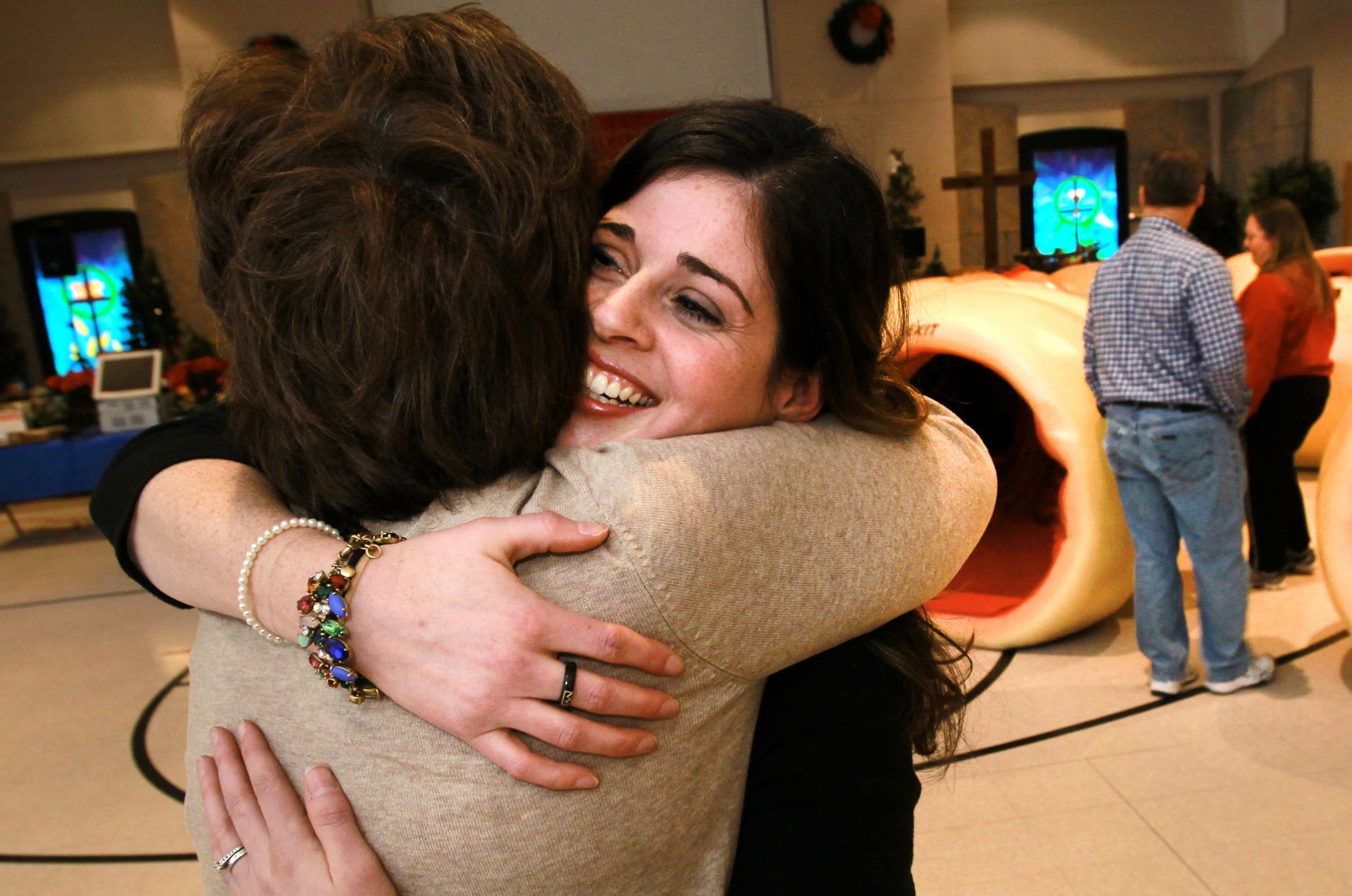KANSAS CITY, Mo. , She couldn’t tell her mom that something was wrong because it was way too embarrassing.
She didn’t even like to walk down the toilet paper aisle at the grocery store.
So when Danielle Ripley-Burgess, 30, of Lee’s Summit, Mo., was in junior high school and began finding blood in the toilet after going to the bathroom, “I didn’t say anything about it for a long, long time. I was mortified.”
When she finally did, she and her mom, at first, did their own research on the Internet and figured that because Danielle was so young, the problem had to be something benign, such as hemorrhoids.
o Blood in the stool (frequently not visible to the naked eye), a change in stool habits, a gradual decrease in the size of the stool, increasing abdominal pain, unexplained weight loss.
o Those symptoms are much more likely to occur when the tumor is in the rectum or the very last part of the colon. Cancers that are higher up in the colon frequently don't signal their presence with these symptoms until the tumor is quite large. That's why screening for the cancer when there are no symptoms is critical.
o Anyone with one or more of these symptoms should tell their doctor.
Source: Larry Geier, genetics oncologist at the University of Kansas Cancer Center.
Wrong.
Just a few weeks after her 17th birthday in 2001, she was diagnosed with Stage 3 colon cancer, going from prom plans to hospital stays in the blink of an eye.
o Blood in the stool (frequently not visible to the naked eye), a change in stool habits, a gradual decrease in the size of the stool, increasing abdominal pain, unexplained weight loss.
o Those symptoms are much more likely to occur when the tumor is in the rectum or the very last part of the colon. Cancers that are higher up in the colon frequently don’t signal their presence with these symptoms until the tumor is quite large. That’s why screening for the cancer when there are no symptoms is critical.
o Anyone with one or more of these symptoms should tell their doctor.
Source: Larry Geier, genetics oncologist at the University of Kansas Cancer Center.
Today, at 30, she’s a wife and mother running a marketing firm — Semicolon Communications — and doing what she can to get people talking about what she once feared.
She’s not above using props either. Big ones. In early December, she arranged to have a 40-foot crawl-through model of a colon trucked into Kansas City.
The message? Being afraid to talk about what happens in the bathroom could kill you.
Deadly disease
Colorectal cancer is the second-most deadly cancer, but the majority of cases are preventable with the use of a common screening procedure called a colonoscopy.
Precancerous growths found during a colonoscopy — recommended every 10 years beginning at 50 — can be removed on the spot. That’s important because those growths, or polyps, can stick around in your colon for years and become full-blown cancer.
“This is the only situation in all of medicine where the test used to screen for a cancer is also the method for preventing that same cancer,” said Larry Geier, a genetics oncologist at the University of Kansas Cancer Center and one of Ripley-Burgess’ doctors.
“In all other situations — mammogram, Pap smear — the screening test may be effective for early detection but provides no ability to prevent the cancer itself.”
And yet, people fear the colonoscopy. Statistics show that only half of Americans older than 50 have ever had one, or any other type of colorectal cancer screening process.
The ick factor
The ick factor is high. Here are the excuses patients give Geier.
• “I don’t like the idea of a doctor sticking a scope up my rectum. I am too modest for that.”
• “I hear the preparation for the test is very difficult, and I don’t want to do that.”
• “I am not having any symptoms, therefore I don’t have cancer.”
• “I just don’t have time for that.”
“I have heard each of these reasons too many times over the years, and none of them is worth taking the chance, or what I consider to be playing Russian roulette with your colon,” Geier said.
Only 10 percent of all people diagnosed with the disease are younger than 50.
But while cases of colon cancer among adults 50 and older are falling, rates among younger adults like Ripley-Burgess are rising, according to the Colon Cancer Alliance.
“There is definitely a trend toward younger age at the time of diagnosis of colon cancer in the past two decades,” Geier said.
“Changes in diet, better screening and more awareness of early symptoms may each have a role but still don’t provide adequate explanation,” he said.
What happened to Ripley-Burgess was rare. She was diagnosed with colon cancer at 17 and again at 25, when all but a foot of her large intestine had to be removed.
“I have to be kind of careful with what I eat, when I eat.” No big chili dogs for lunch, for example. “It’s normal for me now.”
It was her bad luck to be, Geier put it, “genetically programmed” to develop colon cancer at such a young age. She has a genetic trait known as Lynch syndrome, which affects about 1 in every 4 to 5 Americans and is largely underdiagnosed.



